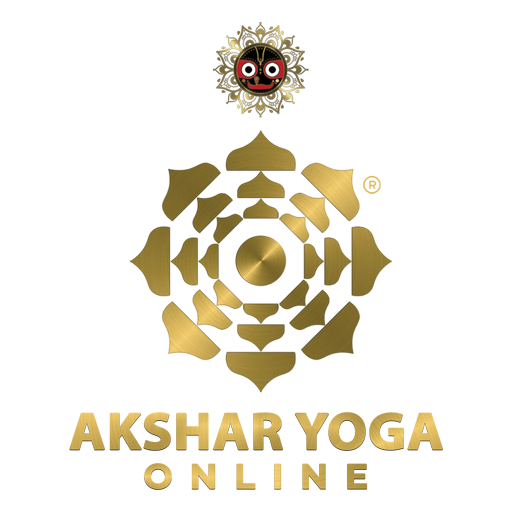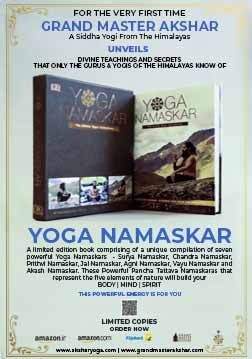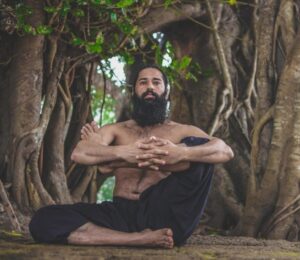Yoga, in its authentic splendour is a demonstration of what the Guru-Shishya Ashram system did for the spine. Young ‘Shishyas’ or students throughSuksmavyayam or subtle exercises practisedrolling movements, side rolls, tumbles thus forming spine strength and flexibility at an early age.
Back pain though is not discriminatory in nature and affects people of all age groups. In children and adolescents, causes may include extra body weight, obesity, unscientific sports activities and heavy backpacks. Young and older adults can both suffer from back related pain through excessive exercising, abrupt movements and lifting heavy objects. Intensity of the pain can be categorized as acute, sub-acute, or chronic. With maximum of the body weight supported by the lumbar area, it is easily the most affected.
The human spinal column designated with providing the body its form and function is most susceptible to weakness, pain and injury. Based on the area affected, back pain can be classified into neck (cervical), mid- back (thoracic), lower back (lumbar) or coccydynia (tailbone or sacral pain).
The spine with its ascending and descending pathways is also the seat of Kundalini Shakti. In the gross form, nerve pathwaysgo upward toward the brain carrying sensory information from the body. The pathways that travel down the spinal cord allow the brain to control body movements below the head. In the subtle nature, Kundalini (Sanskrit for coiled one) is said to be a source of primal energy situated at the base of the spine. Yoga aims towake this ‘coiled snake’ and bring her up a subtle nerve or channel of the spine all the way to the crown of the head also called ‘thousand-petaled lotus’.
Practising these simple Yoga asanaswill help you tohelp strengthen your back.
- Bhujangasana (Cobra Pose)
Formation of the posture:
- Lie down flat on your stomach with palms placed under your shoulders
- Keep your feet together, with toes on the ground
- Inhale completely (Purak), hold your breath (Kumbakh) and then lift your head, shoulders and torso up at a 30 degree angle
- Ensure that your navel remains on the floor, your shoulders are broad and head slightly raised upwards
- Pressure on your toes– This activates the Sun (Right) and Moon (Left) channels which are connected to your lower back
- Hold the posture for 10 seconds
- Slowly bringyour torso down and then exhale breath (Rechak) – This breathing technique is therapeutic
- Shalabasana (Locust Pose)
Formation of the posture:
- Lie down flat on your stomach with your palms placed under your thighs
- Inhale completely (Purak), hold your breath (Kumbakh) and then lift your legs uptogether
- Ensure that your knees remainstraight and feet are together
- Place your chin or forehead on the ground
- Hold the posture for 10 seconds, slowly bringing your legs down and then exhale breath (Rechak) – This breathing technique is therapeutic
- Triakabhujangasana
Formation of the posture:
- Lie down flat on your stomach with palms placed under your shoulders
- Keep your feet apart, at a distance of about 2ft with outer toes on the ground
- Inhale completely (Purak), hold your breath (Kumbakh) as you lift your head, turn to look over your right shoulder at your left heel
- Hold the posture for about 10 seconds, turn to the front and exhale as your bring your torso down
- Inhale completely (Purak), hold your breath (Kumbakh) as you lift your head, turn to look over your left shoulder at your right heel
- Hold the posture for about 10 seconds, turn to the front and exhale as your bring your torso down
- MadhyamGathiMarjari (Medium Speed Cat Pose)
Formation of the posture:
- Form a table with your body by placing your palms and knees down coming on all fours
- Keep your palms under your shoulders and your knees apart placed directly under your pelvis and in line with your palms
- Inhale completely (Purak), as you curl your spine causing a dip in your mid-back and look upward
- Exhale completely (Purak), as you arch your spine and look downward towards your navel region
- Inhale and exhale, curling and arching your spine alternatively at medium speed
- Samasthithi
Formation of the posture:
- Stand upright with your feet together
- Keep your arms by the side of your body, palms turned inward without making contact
- Gently close your eyes and relax your body
- Focus on conscious breathing keeping your inhalation and exhalation soft





